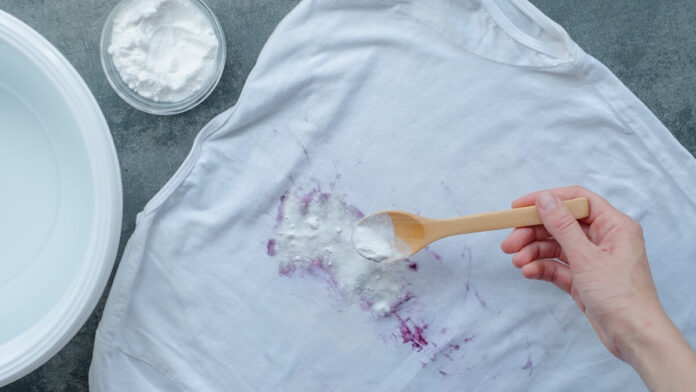In the age of social media and DIY enthusiasts, cleaning hacks have taken the internet by storm. People are promising that seemingly simple solutions will revolutionise your cleaning routine.
One such hack is the combination of vinegar and baking soda. It has been touted as a miracle cleaning solution, but is it truly effective, or is it merely a case of chemical theatrics?
Understanding the chemistry of cleaning
To demystify the cleaning potential of vinegar and baking soda, we must first delve into the basics of chemistry. Foods that taste sour contain acids. For instance, lemon juice contains citric acid, apples contain malic acid, yoghurt contains lactic acid, and soft drinks often contain phosphoric acids.
All these acids share similar properties. They can all release hydrogen ions (positively charged atoms) into water. Depending on their potency, acids can also dissolve minerals and metals through various chemical reactions.
Vinegar, a common household staple, is composed of acetic acid and water, with concentrations of acetic acid ranging from 4 to 10 per cent. This acidic nature enables vinegar to dissolve mineral deposits such as limescale, which is why it’s often recommended for cleaning showers and kettles.
On the other side of the pH scale, we have bases, which bind hydrogen ions rather than releasing them. Bases are adept at lifting insoluble grime and breaking down fat molecules. This is why sodium hydroxide is used for cleaning drains – its strong base properties can dissolve fats and hair. This allows blockages to be broken down and easily flushed away.
Baking soda (also known as sodium hydrogen carbonate, sodium bicarbonate, or bicarb) is a relatively weak base commonly found in the kitchen. It’s less potent than other bases including sodium carbonate (washing soda), sodium hydroxide (lye) and ammonia.
When vinegar and baking soda are mixed, they fizz. The reaction forms water, sodium acetate (a salt), and carbon dioxide – the gas responsible for the fizz. While the reaction is visually impressive, it doesn’t necessarily translate to cleaning efficacy.
The reality of the reaction
The effervescent reaction between vinegar and baking soda might seem like it’s working hard to clean, but the truth is that the resulting sodium acetate is a weaker base than baking soda and doesn’t contribute much to the cleaning process.
Most vinegar and baking soda cleaning recipes you can find on the internet tend to include an excessive amount of one ingredient over the other. For instance, a popular DIY oven cleaner recipe found on TikTok suggests using one-and-a-half cups of baking soda alongside one-quarter cup of vinegar.
When examining the chemical reaction involved, it becomes evident that after the initial fizzing reaction, more than 99 per cent of the baking soda remains unreacted. Therefore, it’s the baking soda that serves as the primary cleaning agent in this scenario, along with the manual effort of scrubbing.
For tough jobs such as oven cleaning, stronger cleaners containing sodium hydroxide are more effective, though they come with increased caustic risks. Additionally, many modern ovens are equipped with self-cleaning features that may negate the need for chemical cleaners.
When to use vinegar and baking soda
Despite the lack of evidence supporting the combined use of vinegar and baking soda as a cleaner, there are instances where the bubbling action can be beneficial. For example, in a clogged drain, the fizzing can provide a mechanical force that helps dislodge blockages. However, for most cleaning tasks, it’s advisable to use either vinegar or baking soda alone, based on the specific cleaning needs.
The risks of DIY cleaning mixes
While experimenting with homemade cleaning solutions can be tempting, it’s crucial to approach such practices with caution. Mixing cleaning chemicals can be dangerous, and it’s important to read product labels and directions thoroughly.
The verdict
The enchanting fizz of vinegar and baking soda may not be the cleaning panacea it’s often made out to be. While it has its place in certain scenarios, relying on it for general cleaning might not yield the results you’re hoping for. Instead, understanding the properties of each substance and using them independently will likely lead to a more effective and satisfying clean.
Have you tried using vinegar and baking soda for cleaning? Share your experiences and any tips you’ve discovered in the comments section below.
Also read: Old-fashioned cleaning tips that really work

